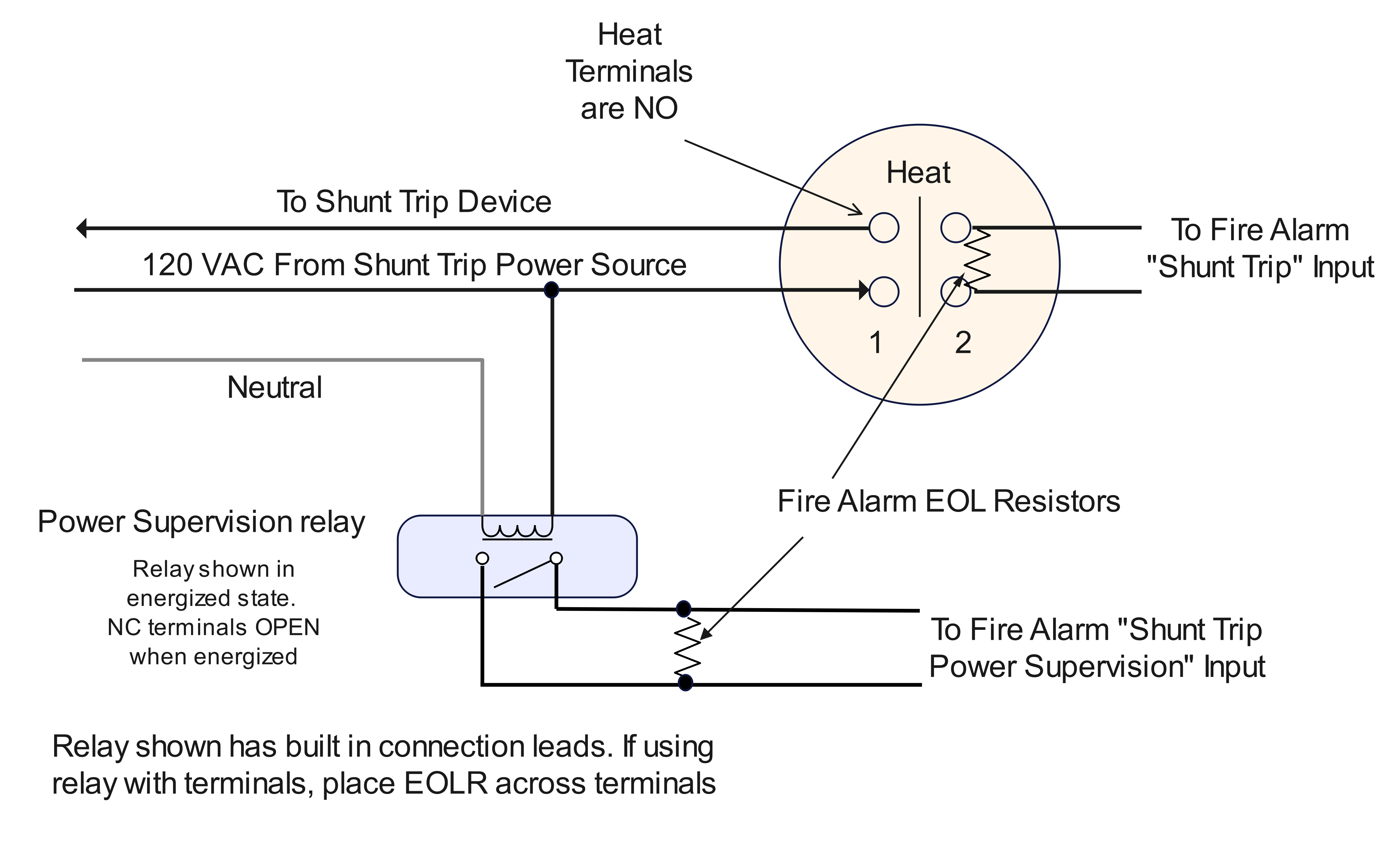How To...
Elevator Shunt Trip Wiring
Elevator mechanical rooms protected by a sprinkler may require an Elevator Power Shunt Trip device. The drawing below is an example of a shunt trip system. In this example, we are using a 135-degree fixed dual-terminal heat detector. The fire alarm system monitors one side of the detector, while the other side is used to pass line voltage to a Shunt Trip Power Disconnect Device. When the heat detector trips, power from the shunt trip power circuit is passed to the shunt trip device, which trips, thereby removing power to the elevator system. The heat detector is intended to trip BEFORE the sprinkler head activates. Best to cut the power before water is applied. The fire alarm panel monitors the second set of terminals. This is typically called an "Elevator Shunt Trip". Activation of the "Elevator Shunt Trip" input usually creates a SUPERVISORY ALERT not a general fire alarm.

The shunt trip power is provided through a dedicated circuit. If, for some reason, the circuit is turned off, the fire alarm system needs to notify management that the shunt trip system is not going to activate. To monitor the power status, a relay is used. The relay is installed using normally closed terminals which, when energized, are open.
Modern elevator power systems may utilize a shunt trip panel where the power is not provided by a dedicated circuit but instead, the shunt trip power is provided by the shunt trip panel itself. There is no need to monitor the status of available shunt trip power because if there is no shunt trip power, it is because there is no power to the elevator system. Problem solved. You still need to monitor the shunt trip heat detector.